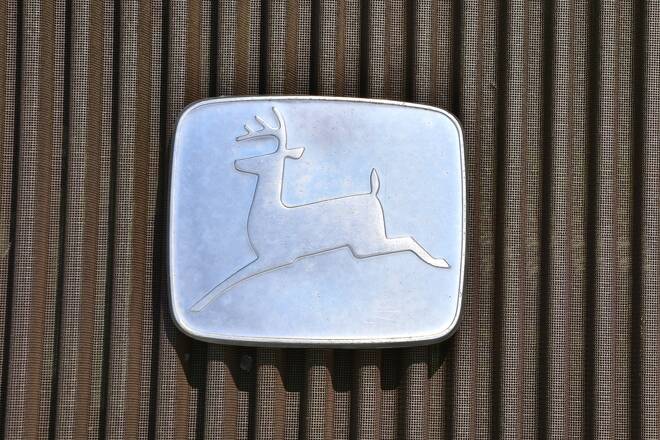Advertisement
Advertisement
Deere on Track to Beat Earnings Estimates; Supply Chain Disruption a Risk
By:
“Despite positive secular demand fundamentals within both the Ag and Construction businesses we are lowering near-term estimates for Deere (DE) (F4Q21/F1Q22) to better reflect the impact from lost production in the US stemming from supplier bottlenecks and the labour strike,” noted Stephen Volkmann, equity analyst at Jefferies.
Deere & Company, the world’s largest maker of farm equipment, is expected to report its fiscal fourth-quarter earnings of $3.92 per share, which represents year-over-year growth of over 64% from $2.39 per share seen in the same period a year ago.
The agricultural, construction and forestry equipment manufacturer would post revenue growth of more than 20% to $10.5 billion. It is worth noting that in the last two years the company has delivered an earnings share price (EPS) at all times.
“We expect Deere to likely post revenues below, but earnings above, the consensus estimates. While a gradual opening up of the economies with a rise in vaccination rates has resulted in a sharp rebound in overall equipment demand over the recent quarters, a trend likely continued in Q3 as well, the company’s overall performance may be weighed down by higher raw material costs and supply chain headwinds,” noted analysts at Trefis.
“That said, our forecast indicates that Deere’s valuation is $434 per share, which is around 22% above the current market price of $357.”
Deere shares have gained over 30% so far this year. The stocks traded over 2.0% higher at $353.15 on Monday. Wednesday’s better-than-expected results could help the stock recoup recent losses.
Deere Stock Price Forecast
Seven analysts who offered stock ratings for Deere in the last three months forecast the average price in 12 months of $409.14 with a high forecast of $450.00 and a low forecast of $354.00.
The average price target represents a 16.55% change from the last price of $351.03. From those seven analysts, four rated “Buy”, three rated “Hold” while none rated “Sell”, according to Tipranks.
Morgan Stanley gave the base target price of $442 with a high of $620 under a bull scenario and $235 under the worst-case scenario. The firm gave an “Overweight” rating on the farm equipment maker’s stock.
“Deere (DE) is one of the highest quality, most defensive names within the broader Machinery universe, given a historically lower cyclicality of Ag Equipment and history of strong management execution. FY21 should mark a tangible acceleration in the NA large ag replacement cycle, as commodity tailwinds are complemented by moderating trade headwinds and improving farmer sentiment,” noted Courtney Yakavonis, equity analyst at Morgan Stanley.
“With mgmt continuing to execute against its 15% mid-cycle operating margin target, we see continued momentum in DE’s margin improvement narrative – representing one of the most attractive idiosyncratic margin improvement narratives in the broader Machinery group.”
Several other analysts have also updated their stock outlook. Citigroup cut the price target to $400 from $415. Deutsche Bank lowered the target price to $375 from $383. Evercore ISI slashed the target price to $354 from $470.
Technical analysis suggests it is good to sell as 100-day Moving Average, and 100-200-day MACD Oscillator signals a strong selling opportunity.
Analyst Comments
“Despite positive secular demand fundamentals within both the Ag and Construction businesses we are lowering near-term estimates for Deere (DE) (F4Q21/F1Q22) to better reflect the impact from lost production in the US stemming from supplier bottlenecks and the labour strike,” noted Stephen Volkmann, equity analyst at Jefferies.
“We assume any lost production elongates the cycle, and we maintain our above Consensus estimates for 2023 noting additional upside from the infrastructure bill has yet to be factored into outlooks.”
About the Author
Vivek Kumarauthor
Vivek has over five years of experience in working for the financial market as a strategist and economist.
Advertisement
